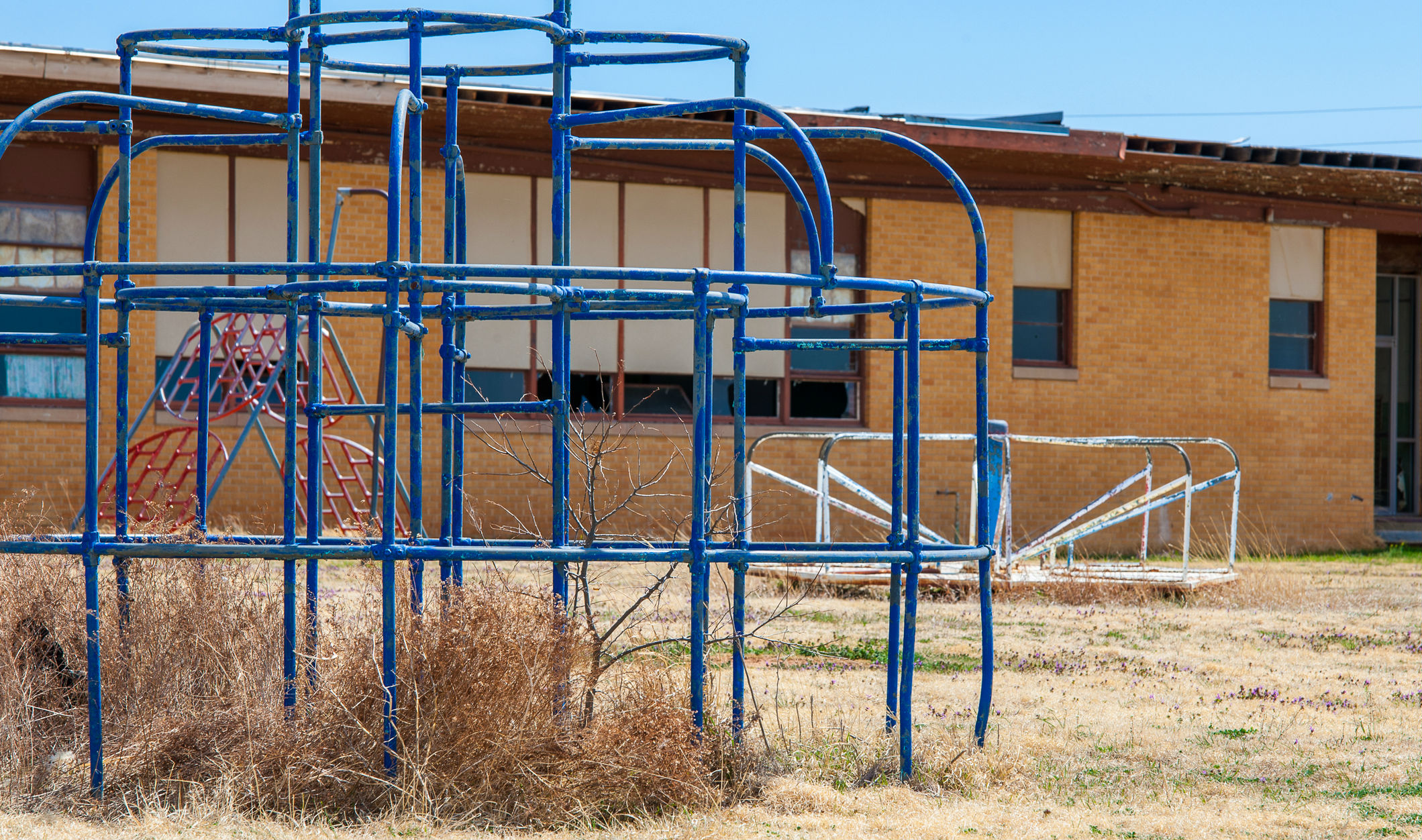Issue Category: Public Health Preparedness
The Senate’s Latest Obamacare Replacement Effort will not improve the Nation’s Health, Affordable Care Act
Washington, D.C., July 25, 2017 – The below is a statement from John Auerbach, president and CEO, of Trust for America’s Health (TFAH) on the Senate’s motion to proceed.
“Each new iteration of Obamacare repeal legislation has failed to do what a health bill should: improve the nation’s health.
We know—according to the Congressional Budget Office’s scores on any number of the attempted bills—that tens of millions of people will quickly lose access to health insurance and the preventive services and programs which keep them from developing debilitating and costly chronic diseases.
That is, simply, the opposite of what a bill—intended to improve the nation’s health—should do.
Continued attempts to eliminate the Prevention and Public Health Fund would irreparably harm the nation’s health. States and communities rely on the hundreds of millions of dollars they receive annually to work on the critical health issues—including the opioid epidemic, lead poisoning, obesity, tobacco use and vaccine-preventable illnesses—facing their citizens.
To date, any funding included in repeal legislation for the opioid crisis has been nowhere near enough to solve the problem and will not make up for the substantially larger cuts to Medicaid and the Prevention Fund.
Estimates have found that the total coverage cost for people receiving treatment for substance misuse disorders could reach $220 billion over the next decade. And, people with substance misuse disorders often suffer from additional health problems – for example, mental illness and chronic conditions such as heart disease or diabetes – and need the routine access to care and services provided by Medicaid. As such, substance misuse treatment must remain part of the Medicaid integrated care system.
TFAH encourages the Administration and Congress to start over and create a true healthcare bill that will improve upon Obamacare, keep people covered and safeguard the nation’s health.”
Trust for America’s Health is a non-profit, non-partisan organization dedicated to saving lives by protecting the health of every community and working to make disease prevention a national priority.
###
Public Health Leaders Make Urgent Joint Call to Protect Prevention and Healthcare
Joint Statement from American Public Health Association, Prevention Institute, Public Health Institute and Trust for America’s Health
June 20, 2017
The fight to protect public health is more important than ever.
The Senate is moving quickly—and secretively—on their version of legislation to repeal the Affordable Care Act (ACA). While we don’t know the content of the bill, we do know that the House-passed repeal bill—the American Health Care Act—would cause over 23 million people to lose their healthcare, restructure Medicaid, pare down essential benefits like maternity and newborn care, result in the loss of over a million American jobs, and zero out the Prevention and Public Health Fund. As leaders of organizations dedicated to protecting and advancing the public’s health, we call on Congress now to protect federal investments in public health funding, the Prevention and Public Health Fund, and affordable, high-quality healthcare.
Public health is at the very core of keeping our country safe, healthy, resilient, and secure. It works behind the scenes to ensure we have clean water to drink, safe food to eat, and healthy air to breathe. It works to safeguard us from infectious diseases like measles or Ebola by preventing the onset or spread of disease. It builds on time tested strategies to reduce the toll of chronic diseases and injuries. Public health works to redress long-standing inequities in health and safety, by investing in communities of greatest need. Through prevention, evidence-based treatment of substance use, prescription drug monitoring, and improved opioid prescribing, public health can solve the opioid epidemic, which kills ninety-one Americans a day. From opioid overdoses to rising infant and maternal mortality rates, Americans are seeing both the length and quality of their lives decline—and we need more, not fewer, investments in public health to turn the tide.
Repealing the ACA and its investments in public health and prevention dismantles the capacity of public health to do its work. The pain will be felt in every state, every congressional district, and every neighborhood, and those who are most vulnerable will suffer the most. If the Prevention Fund is eliminated, over the next five years states stand to lose over $3 billion they rely on to prevent chronic disease, halt the spread of infections, and invest in the community resources that support health and safety. Repealing the ACA and the Prevention Fund ensures there is no progress to reduce healthcare spending or improve the health of our workforce. Repealing the ACA will result in an America where preventable suffering and death are more widespread, and an America where the poorest and sickest communities fall even farther behind.
A strong public health infrastructure is at the very core of making our country safe, healthy, and secure. We need to act now to protect it.
The President’s FY 2018 Budget Proposal Would be Perilous for the Nation’s Health
Washington, D.C., May 23, 2017 – The below is a statement from John Auerbach, president and CEO, of Trust for America’s Health (TFAH) on the President’s Fiscal Year (FY) 2018 proposed budget announcement.
“The proposed $1.2 billion cut to the Centers for Disease Control and Prevention (CDC) would be perilous for the health of the American people.
From Ebola to Zika to opioid misuse to diabetes to heart disease, the CDC is on the frontlines keeping Americans healthy. Cutting nearly 20 percent of the CDC’s Chronic Disease Prevention and Health Promotion center’s budget would be disastrous.
Enormous cuts are also proposed throughout the rest of the agency including to programs that protect the American people from infectious diseases, environmental contaminants, exposure to tobacco and much more. If these budget cuts were to occur, they would cripple CDC’s operations and result in increased illnesses, injuries and preventable deaths.
CDC has already lost more than $580 million in funding since 2010 – and the proposed American Healthcare Act would, in FY 2019, repeal the Prevention and Public Health Fund, which supplies 12 percent of CDC’s budget—of which more than $620 million goes yearly to states.
Even now, with a relatively stable FY 2017 budget, CDC is operating with nearly 700 vacancies and will function with diminished resources once the Zika emergency supplemental funding runs out.
As such, this unprecedented and dramatic cut would have unparalleled and drastic consequences for our nation’s health and would likely lead to staggering increases in our healthcare service costs. It would also create massive holes in state public health funding, as states and local communities rely on the hundreds of millions they receive from CDC every year.
In essence, the proposed budget would force CDC to fight epidemics and health threats with both hands tied behind their back while wearing a blindfold.
We urge the Administration and Congress to work together to ensure CDC is able to protect the American people and help Americans be healthy and thrive.”
###
Trust for America’s Health is a non-profit, non-partisan organization dedicated to saving lives by protecting the health of every community and working to make disease prevention a national priority.
House ACA Replacement will Cripple the Nation’s Health, Trust for America’s Health Statement
Washington, D.C., May 4, 2017 – The below is a statement from John Auerbach, president and CEO, of Trust for America’s Health (TFAH).
“As historic as the passage of the Affordable Care Act was, any passage of the American Health Care Act will be just as infamous.
Tens of millions of American citizens will lose coverage. And millions of people on private insurance and Medicaid may lose access to life- and cost-saving clinical preventive services.
In particular, the Meadows-MacArthur Amendment would permit states to eliminate the requirement around essential health benefits (EHBs) and allow for the discrimination of people with pre-existing conditions.
Research tells us time and again two truths: Americans with coverage of preventive services are more likely to access these services and investing in preventive services improves health and reduces costs, yielding massive returns on investment.
Additionally, the agencies responsible for keeping us safe daily from ever-increasing public health threats will have their budgets slashed.
If the bill eventually becomes law, the Centers for Disease Control and Prevention (CDC) will lose 12 percent of its budget, of which a significant portion—$625 million a year—goes directly to state and local health departments.
This is a double whammy to the nation’s health.
Every day, the CDC and local public health departments are on the front lines in preventing disease outbreaks like Zika and Ebola, in protecting our children from lead poisoning, in lowering rates of heart disease, in stopping epidemics like prescription drug misuse and in helping people quit tobacco.
If the bill eventually passes, the results won’t be celebrated—they’ll be infamous.
We will likely see more overdoses and untreated STDs, rises in infant mortality and increases in innumerable other preventable health issues—not to mention mounting healthcare costs. All the while, our most vulnerable—the elderly, children, sick and less advantaged—will be at most risk.
That should not be the result of a health law.
We hope the United States Senate sees the many problems in the legislation.”
###
Trust for America’s Health is a non-profit, non-partisan organization dedicated to saving lives by protecting the health of every community and working to make disease prevention a national priority.
A Funding Crisis for Public Health and Safety: State-by-State Public Health Funding and Key Health Facts, 2017
Impact of the 2017 Health Reform Proposals on Clinical Preventive Services
TFAH Statement: Budget Proposes Devastating Cuts for Public Health
Washington, D.C., March 16, 2017 – The below is a statement from John Auerbach, president and CEO, of Trust for America’s Health (TFAH).
“The President’s proposed budget – which includes nearly an 18 percent cut to the Department of Health and Human Services (HHS) – would be devastating to the public health and safety of Americans. This would constitute an unprecedented harmful blow to the nation’s health.
While there are not sufficient details in the budget blueprint about the impact to HHS agencies, including at the Centers for Disease Control and Prevention (CDC), it is clear that such a big decrease would undercut core health programs that are needed to address any and all health problems.
There is nothing more valuable than the health and vitality of the American people. To achieve that, we need to maintain a strong and stable public health system. Such significant cuts would hurt the country’s health system – which is essential for taking on the range of epidemics we face – from major disease outbreaks to diabetes to prescription painkiller misuse.
A few CDC-specific areas referenced in the budget blueprint include:
- A proposal for a $500 million block grant program for states via CDC. The proposal does not provide specifics about the program or where the funds would come from, beyond encouraging flexibility for states to focus on their leading public health challenges. We would raise major concerns that in the past – when funding sources have been combined, they have also been reduced – leaving states with less funding and with less ability to address the health problems of their citizens. States then end up in a position of having to make tough trade-offs about which health problems they can address.
- The creation of a Federal Emergency Response Fund. The document, however, does not provide sufficient information to evaluate what the fund would look like or if there would be new resources to support it, or if support would be diverted at the expense of funding for other programs. While creating such a fund is important – to allow for access to immediate funds during health emergencies – it is essential that such a fund be supplemental – and not come at the expense or instead of maintaining an ongoing public health security and defense programs. We need both steady ongoing capabilities – as well as the ability to quickly access emergency supplemental funds in times of crises.
- 500 million to address the opioid epidemic. A national commitment to this priority health crisis is important. However, the budget proposal was unclear as to whether these are new funds, funds that came from passage of the CURES bill or funds diverted from other programs. In addition to specific funding to address the crisis, it is also essential to maintain and sufficiently support the underlying public health system that any response would build upon.
Proposed cuts to other agencies and programs also threaten to adversely impact the health of Americans. For instance, the 31 percent proposed cut to the Environmental Protection Agency (EPA) could potentially roll back decades of progress protecting against the health impacts of air and water pollution. And, stable and secure housing is a major factor for maintaining good health – and the proposed 13 percent cut to the Department of Housing and Urban Development (HUD), including eliminating the Community Development Block Grant program, would contribute to harming the health and stability of numerous vulnerable families.
These cuts would be historically damaging to our nation’s health. The country is at a crossroads – where we have the knowledge and capability to help Americans have healthier, longer lives – but if we don’t invest and maintain these efforts, we will be taking a turn down the wrong path. The lives of our families are too valuable, and the stakes are too high to undercut our health and wellbeing.”
Trust for America’s Health is a non-profit, non-partisan organization dedicated to saving lives by protecting the health of every community and working to make disease prevention a national priority.
###
TFAH Statement: Strongly Opposed to the House Obamacare Replacement Bill
Washington, D.C., March 7, 2017 – The below is a statement from John Auerbach, president and CEO, of Trust for America’s Health (TFAH).
“We are strongly opposed to the House Obamacare Replacement bill, which would repeal significant portions of the Affordable Care Act (ACA), including the Prevention and Public Health Fund.
Under this plan, millions of people could lose health insurance—a devastating blow to the health of many of our nation’s most vulnerable individuals and families. Without affordable insurance coverage we will see increased levels of preventable illnesses, injuries and deaths.
In addition, eliminating the Prevention Fund would erase 12 percent of the Centers for Disease Control and Prevention’s (CDC) budget. Of that investment, $625 million directly supports state and local public health efforts to fight preventable diseases such as diabetes, heart disease and cancer.
Losing this funding would wreak havoc on our efforts to reduce chronic disease rates, immunize our children, stop the prescription drug and opioid epidemic and prepare the public health system to prevent infectious disease outbreaks.
We know how to prevent many chronic and infectious illnesses—which make up a significant portion of the $3 trillion the nation spends yearly on healthcare. If we lose access to health care coverage and to the Prevention Fund, our children, families and communities will suffer and ultimately costs will rise.
The bottom line? This Bill would make untold numbers of the American people less healthy.”
###
Trust for America’s Health is a non-profit, non-partisan organization dedicated to saving lives by protecting the health of every community and working to make disease prevention a national priority.
TFAH Statement on the Draft House Republican Obamacare Replacement Bill: Our Nation’s Health Will Suffer
Washington, D.C., February 24, 2017 – The below is a statement from John Auerbach, president and CEO, of Trust for America’s Health (TFAH).
“The draft House Republican Obamacare replacement bill—which would eliminate the Prevention and Public Health Fund—would threaten the health of American children, families and communities.
Thanks to the Prevention Fund, hundreds of thousands of Americans benefit from increased access to vaccines and other preventive health services. Quite simply, more people are getting and remaining healthy because of the Prevention Fund.
Yet, the proposed replacement bill would eliminate this important Fund and 12 percent of the U.S. Centers for Disease Control and Prevention’s (CDC) budget along with it.
And, without the Prevention Fund, states will lose substantial sums of money—totaling as much as $3 billion over the next 5 years—which fight growing epidemics and emerging diseases.
Every year, we spend $3 trillion on healthcare, yet millions suffer from chronic diseases and death rates among Blacks and other people of color remain too high. At the same time, death rates among white middle-aged Americans increased for the first time in decades, mainly due to preventable conditions.
Time and again research shows that the vast majority of these conditions—heart disease, diabetes and others—can be prevented by investing in addressing the root causes. Yet, the country has repeatedly failed to do so.
The nation cannot afford to trade away our single best investment in preventing disease, preparing for and responding to infectious disease outbreaks, reducing rates of chronic illness, and saving lives and money.
If this draft becomes law, our nation’s health will suffer—and it will be exponentially harder to fight growing epidemics, like the rise in prescription drug and heroin overdoses.”
###
Trust for America’s Health is a non-profit, non-partisan organization dedicated to saving lives by protecting the health of every community and working to make disease prevention a national priority.


